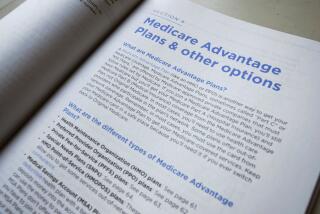How to navigate benefits enrollment season at work

Fall is open enrollment at workplaces for millions of Americans, meaning it’s again time to choose benefits for the next year.
In 2017, 32% of employers reported an increase in overall benefits over the previous 12 months, according to the Society for Human Resources Management’s annual benefits survey. Wellness benefits such as activity programs and standing desks had the highest increase, followed by health benefits such as insurance plans.
Here’s a closer look at common benefits and how to make the best selection.
Health insurance
The cost of employer health insurance has risen every year since at least 1999, according to data from the Kaiser Family Foundation, a nonprofit that conducts healthcare research. In recent years, increases have been less dramatic — a 3% to 4% annual increase since 2012 — than in the early 2000s, when premiums frequently rose more than 9% each year.
But costs are still rising faster than workers’ pay, according to the Kaiser data, and it’s not just premiums. At open enrollment, most employees see “their co-payments go up, their deductibles go up. They’re seeing something taken away,” said John Young, a senior vice president at Alegeus, a benefits technology and services company.
To make the best choice, Young has these tips:
- Familiarize yourself with what deductibles, co-payments and co-insurance mean, and what’s included in your current plan.
- Compare this year’s offerings with last year’s. They may be similar, but check the costs for doctor’s office visits and any other services you use frequently.
- If your employer offers a tool or software to help you choose a plan, use it.
- Write down questions to ask your benefits manager.
Tax-advantaged accounts
Your employer may offer you any of these three types of non-retirement accounts: flexible spending account, or FSA; health savings account, or HSA; health reimbursement arrangement, or HRA. FSAs and HSAs are called tax-advantaged accounts because any money you add comes from your paycheck before taxes, and you don’t pay taxes to withdraw funds.
Many employers offer an FSA and HSA in conjunction with a qualifying high-deductible health plan, which often is the cheapest type of plan available and best for people with few medical expenses.
If you go with a high-deductible health plan, it makes sense to choose an HSA because it has better tax benefits and you won’t risk losing unspent money.
However, you may need a plan that covers more expenses or has a lower deductible if you take prescription medications, see a specialist or have any regular medical expenses. In that case, it generally is better to choose a richer health plan and an FSA, because if you have regular medical expenses, you probably will have to pay far more in out-of-pocket expenses with the high-deductible health plan that goes with an HSA.
Vision and dental insurance
This year, 96% of employers offered dental insurance and 88% offered vision insurance. Routine dental care costs are high enough that the total dental premium probably will pay for itself.
If you don’t need vision correction, you might want to opt out of that insurance if your employer contributes little or nothing to your premiums. An eye exam costs about $200 for a new patient, on average, and if you have healthy eyes, you need one only every two years, so buying vision insurance may not always be worth the cost.
Other types of insurance
While enrolling online and after choosing your regular benefits, you may have noticed a handful of extra insurance policies offered. You may have even added the extras if they cost little and seem like an extra safety net, which they are. Though you probably will never use many of the optional policies, disability and long-term care insurance are often worth the cost.
Glover is a writer at NerdWallet, a personal finance website.






